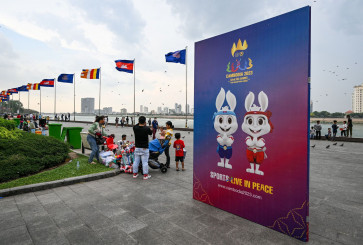Popular Reads
Top Results
Can't find what you're looking for?
View all search resultsPopular Reads
Top Results
Can't find what you're looking for?
View all search resultsIn absence of sorting system, all waste goes to Bantar Gebang
When Gratia Wisung, 25, moved to the city last month, she could not help but feel grateful that her boarding house was located on Jl
Change text size
Gift Premium Articles
to Anyone
W
hen Gratia Wisung, 25, moved to the city last month, she could not help but feel grateful that her boarding house was located on Jl. Rawa Belong in Kebon Jeruk, West Jakarta, where she could find various eateries within a few minutes walk.
Although she said she was not an adventurous person in terms of food, sometimes she tried a new dish for the sake of curiosity.
She would finish her plate if the food was tasty, but it would remain uneaten if she did not like the taste.
“I do not want to force myself. If I don’t like it, I’ll leave half or a quarter of the food uneaten,” she told The Jakarta Post on Saturday.
Gratia said she did not know that leftover food was the city’s largest contributor to waste.
According to data from the Jakarta Environment Agency, the city produced a total 2.3 million tons of waste in 2015. Around 53 percent of the waste comprised organic waste, including leftover food.
Throwing away food has become a habit for Indonesians. Research from the Food and Agriculture Foundation in 2013 revealed Indonesians waste 13 million tons of food every year, amounting to 52.23 tons per person.
For Jakartans, their leftover food will end up at the country’s largest landfill site in Bantar Gebang, Bekasi, West Java.
The waste is dumped onto the mountains of waste at the landfill, which started operating in 1989, creating environmental problems such as air pollution, odor and groundwater pollution in surrounding areas.
However, not many people, including food vendors, know where the food goes after they clean their plates and throw the leftover food into trash bags.
Mariati, 25, a seller of nasi Padang (West-Sumatran-style rice with various side dishes) on Jl. KH Syahdan in Palmerah, West Jakarta, told the Post that she did not know where the food waste would go.
“All I know is the staff from the Jakarta Sanitation Department will pick up the waste every day,” she said.
Mariati always cooks the food she sells at around 6 a.m. before they are displayed on the food counter until late at night. Therefore, she said she was always disappointed to see leftovers when customers finish eating.
“It makes me think that I did not cook the food well so people did not enjoy it, let alone finish it,” she said, adding that she wished people could respect the food as well as the chef so she did not have to throw away food.
On the other hand, Suryadi, 30, has no choice but to throw away pretzels every 30 minutes to comply with the procedures of American pretzel chain Auntie Anne.
The manager of Auntie Anne’s outlet at Senayan City mall in Gelora, Tanah Abang, Central Jakarta, said the rule was there to ensure the pretzels were still fluffy and warm when purchased. As the pretzels did not use eggs, they could not stay fresh for long.
Therefore after the pretzels are cooked, they are kept in a warm oven for 30 minutes. If no one buys the products within 30 minutes, the staff will throw them away.
“A customer once threw a pretzel in my face because it was already hard and cold, and my boss reprimanded me for that. I do not want to take any risks, so the staff and I stick to the rule,” he said.
However, he said the staff would eat the pretzels or share it with other food counter staff nearby if the pretzels were still good to eat. (ecn)










